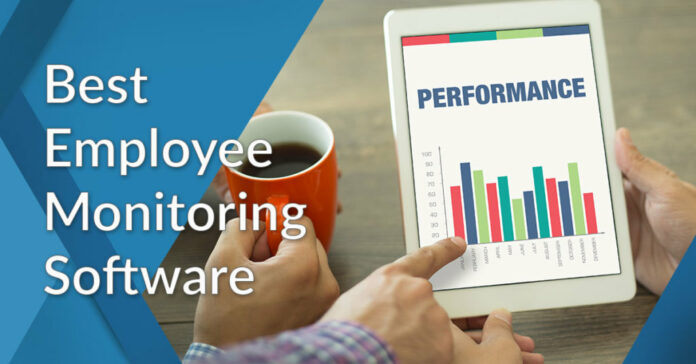In order to make sure that service is good and that staff are using their time well, companies use employee monitoring software. Phone calls, emails, social media interactions, and live chats may all be logged to make sure that specific initiatives are working and that employee quality is being maintained.
Managers of customer service teams routinely utilise employee monitoring software to ensure that employees are working appropriately and to the best of their abilities. The solutions can also help sales teams who are trying out various pitches or tactics to ensure that the right messages are getting through to prospects.
These tools enable businesses to be flexible, swiftly determining which tactics are effective and pivoting based on their level of success. There are many ways to use employee monitoring software, but it is often used with contact centre software. It can also be used with live chat and outbound call tracking.
What is Employee Monitoring Software and How Does It Work?
Employee monitoring is a broad term that refers to monitoring and tracking employees’ activities. When employees use a corporate network or work from home, this software helps them keep track of what they do. It also helps when the employees are representing the company outside of the office, for example, at a client site.
Employers can use employee monitoring to keep track of email messages sent and received, other electronic communications, application usage habits, individual keystrokes, internet browsing history, network logon or off times, files copied to USB drives, their physical location (for remote workers), and employee productivity.
Employee monitoring is part of a larger monitoring system called enterprise management systems (EMS), which includes the monitoring of many different types of tracking or surveillance in a company. EMS also includes the monitoring of employees.
What Are the Different Types of Employee Monitoring Software?

Managers Tracking: Managers may keep track of employee calls, emails, and general internet usage by monitoring their phones and PCs. URL filtering, for example, can prohibit employees from spending time on websites that are inappropriate for work.
Monitoring customer interactions: Customer interactions can be monitored to ensure that employees are communicating with customers correctly and efficiently. When speaking with a customer over the phone or via text message, managers can use insights to understand where an employee needs to improve.
What Are the Benefits of Using Employee Monitoring Software?
Employee monitoring software allows employers to keep track of the quality of an employee’s work as well as the amount of time they spend on the employee. Reports highlight the most productive employees, allowing businesses to see how productive their entire team is. Monitoring not only shows people who can’t focus at work, but it also shows who is the best at their job.
Managers can measure performance and time wasted during work hours by watching and managing how their employees spend their time. Managers that are aware of what project an employee is working on can use this information to shift the individual’s focus as needed. If a manager detects an employee choosing one activity over another with a shorter deadline, they might speak with the employee and ask them to focus on a task that requires immediate attention.
To make this process easier, many forms of employee monitoring software may be linked into project management software solutions. Employee monitoring provides security insights into the possibility of preventing and tracking employee-related security risks. If a company’s network is affected, email and internet usage monitoring can establish where and when a security breach occurred.
Furthermore, phone calls can be monitored to ensure that personnel are not sharing or accepting sensitive information from customers. Transparency in the workforce: Overall, employee monitoring adds transparency to management teams.
Monitoring gives a high-level picture of overall productivity and barriers that employees face, as well as opportunities to be more productive, as well.
Employers can log in and listen in on employee phone calls via call monitoring monitoring. The quality of the calls is checked to ensure that they meet company standards. Email monitoring allows businesses to keep track of their employees’ email activity. Internal and external communications can be checked to make sure that the employee is sending the right things and communicating in a professional way.
Employers can monitor what online pages their employees view and for how long by using web monitoring monitoring. This provides extra insight into where time is spent the most and whether an employee is spending too much time on non-work-related websites.
Screenshots: Screenshots help to put internet monitoring into context. Employers may see what’s on an employee’s computer screen in real time. If an employee is looking at a website that isn’t appropriate for work, screenshots can help them figure out if it is.
Time logging: Employers may see how much time an employee spends on a particular project or webpage, allowing them to assess task efficiency. When an employee is working, employers can see what they are working on, which allows them to intervene and tell the employee about changes in the job.
GPS tracking and monitoring: The software includes GPS tracking and monitoring functions to track and monitor the whereabouts of personnel. This is especially useful when it comes to company deliveries and pickups.
Note: When critical protocols and secured locations are breached, this function notifies the employer. Employee monitoring systems that focus on behaviour metrics are known as “behavioral analytics.” Employers can better keep an eye on their remote teams and focus on employees who need more training or advice because of this.
Advantages:
Eliminate wastage: The fundamental role of employee monitoring software is to eliminate wastage. Employee monitoring software increases productivity by ensuring that staff follow best practises and do what they were hired to do for the organisation.
Effective management: The information gathered by this software aids in the formation of a more efficient team by highlighting employees’ strengths and weaknesses. Employers have better visibility as a result, providing them with the ability to allocate duties more efficiently.
Employees become more aware of their work and activities because they are always being watched. This also helps companies find flaws in their processes and smooth them out, which leads to more production.
Employee monitoring software allows users to see documents that are on company property, such as laptops and mobile devices, as well as apps that have been installed, websites that have been visited, and messages that have been written.
It keeps track of corporate documentation, financial information, and client information. Insider risks, security breaches, and suspicious conduct can all be avoided. Enhance team performance by reviewing employee activities. This will assist you in uncovering employees who aren’t achieving corporate standards.
Companies may efficiently assess employees’ productivity by having access to data such as login and logout times, total time spent on various tasks, and so on.
Employee Monitor Software: Who Uses It?
Employee monitoring is beneficial to all types of management jobs. The most useful component of monitoring is the comprehensive productivity reports that allow managers to see how their team is doing on a daily basis. Managers can use this information to assign assignments depending on each employee’s performance level, assess which activities certain team members are best at, and identify possible time-wasting or productivity blocks throughout working hours.
Monitoring Software Challenges
Employee morale has suffered as a result of the increased surveillance. It not only creates a sense of distrust, but it also lowers morale and is seen as intrusive. Allowing an employee to only think about work during work hours can lead to employee burnout and high turnover rates.
Employees should not be considered robots who must focus on their work for the duration of their shift. When monitoring staff, it’s critical for managers to strike the right balance to avoid discouraging them. Legal ramifications: Obtaining employee consent to be watched is critical.
Furthermore, certain states have special privacy regulations that should be investigated prior to adopting a solution. California law, for example, compels businesses to disclose whether they are recording their employees’ work-related phone calls. Companies with international staff must also consider other nations’ privacy regulations.
Many European countries, for example, have more stringent email monitoring rules. In many circumstances, websites that are regarded as improper for work must be visited by the employee. Employee monitoring usage reports for a social media specialist will, for example, include social media websites. Managers must distinguish between websites that are actually work-related and those that potentially contribute to time wasted at work.
What Is the Best Way to Purchase Employee Monitor Software?
Employers should determine what exactly needs to be observed and how thoroughly before purchasing employee monitoring software. Before committing to an employee monitoring system, employers must examine a number of aspects, including the size of their staff (remote and in-office), as well as their overall budget.
Employers employing call centre personnel might wish to look into a phone call monitoring system. Employers with a remote workforce may want a comprehensive system that tracks internet usage. Companies should also think about how well they will be able to control their employees and whether or not they are happy with the way they have chosen to do this.
Trending Employee Monitoring
Employee wellness tracking: Using activity trackers, companies can take a technical step toward assuring employee wellness. Activity trackers, which are commonly worn as bracelets, monitor an employee’s heart rate, fitness, and sleeping patterns.
While this does not provide information about workplace efficiency, it does allow firms to offer a wellness programme to their staff in order to encourage healthy practises. Some employers are choosing a more personal monitoring strategy using smart keycards, despite the fact that biometric smart sensors are rare due to legal difficulties. These sensors (which are usually found in keycard badges) track how often an employee gets up from their seat, how often they raise their voice, and where they are in the office.


